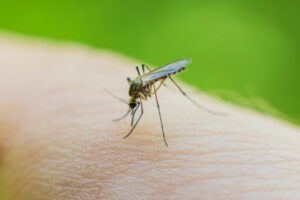
WASHINGTON, Sept. 9, 2025 – Whale watching is a cherished activity along coastlines worldwide, where species like blue whales, humpbacks, and orcas often steal the spotlight. However, not all cetaceans are as conspicuous. Beaked whales, known for their elusive nature, have remained one of the least understood marine mammals, largely due to their cryptic behavior and preference for deep offshore waters.
These whales, which hold the record for the deepest dives among mammals—plunging to depths of around 3,000 meters for over two hours—are believed to exhibit inconspicuous surface behavior partly due to predation pressures. Their mysterious nature has long intrigued scientists.
New Research Sheds Light on Beaked Whales
In a recent study published in the Journal of the Acoustical Society of America (JASA), researchers from Instituto Aqualie, Juiz de Fora Federal University, Mineral Engenharia e Meio Ambiente, and Santa Catarina State University embarked on a mission to record these elusive creatures in the Foz do Amazonas Basin off northern Brazil. The study was published by AIP Publishing on behalf of the Acoustical Society of America.
“The motivation for this research arose from the need to expand knowledge on cetacean biodiversity in Brazilian waters, with particular attention to deep-diving species such as beaked whales,” explained Raphael Barbosa Machado, one of the study’s authors.
Methodology and Findings
Beaked whales are currently represented by 24 known species, distinguished by their unique echolocation pulses, which differ from those of other toothed whales. However, these pulses are typically not emitted at the surface, complicating efforts to associate specific sounds with visually confirmed species.
Starting in 2022, Machado and his colleagues utilized passive acoustic monitoring, hydrophones, and autonomous recorders operating at frequencies of 192-384 kilohertz to capture audio recordings. Their efforts resulted in nine audio recordings and four visual sightings of the whales. Analysis of the data revealed the presence of at least three different beaked whale species.
“This study provides the first documentation of acoustic parameters of beaked whales in Brazilian waters, while also contributing new information on cetacean biodiversity in northern Brazil,” said Machado.
Implications for Conservation and Future Research
The findings underscore the potential of acoustic monitoring as a viable strategy for studying elusive marine life. Machado and his team plan to continue their research on the biodiversity of the western South Atlantic Ocean, a region that remains poorly studied.
Machado emphasized the importance of increasing detections, particularly those that combine visual and acoustic records, to improve the reliability of associating specific acoustic signals with visually confirmed species. This, he noted, is crucial for informing public policies and guiding conservation and management efforts aimed at protecting these elusive creatures.
“As the number of detections increases — particularly simultaneous visual and acoustic records — our ability to reliably associate specific acoustic signals with visually confirmed species will also improve,” Machado stated. “Addressing these knowledge gaps is essential for informing public policies and guiding conservation and management efforts aimed at safeguarding these elusive species.”
Looking Ahead
The discovery of beaked whales in the Foz do Amazonas Basin marks a significant step forward in understanding these mysterious creatures. As researchers continue to delve into the depths of the ocean, the hope is that these efforts will not only illuminate the lives of beaked whales but also contribute to broader conservation initiatives aimed at preserving marine biodiversity.
As the study progresses, it holds the promise of unlocking further secrets of the ocean’s depths, potentially leading to more informed conservation strategies and a deeper appreciation for the rich tapestry of life beneath the waves.






